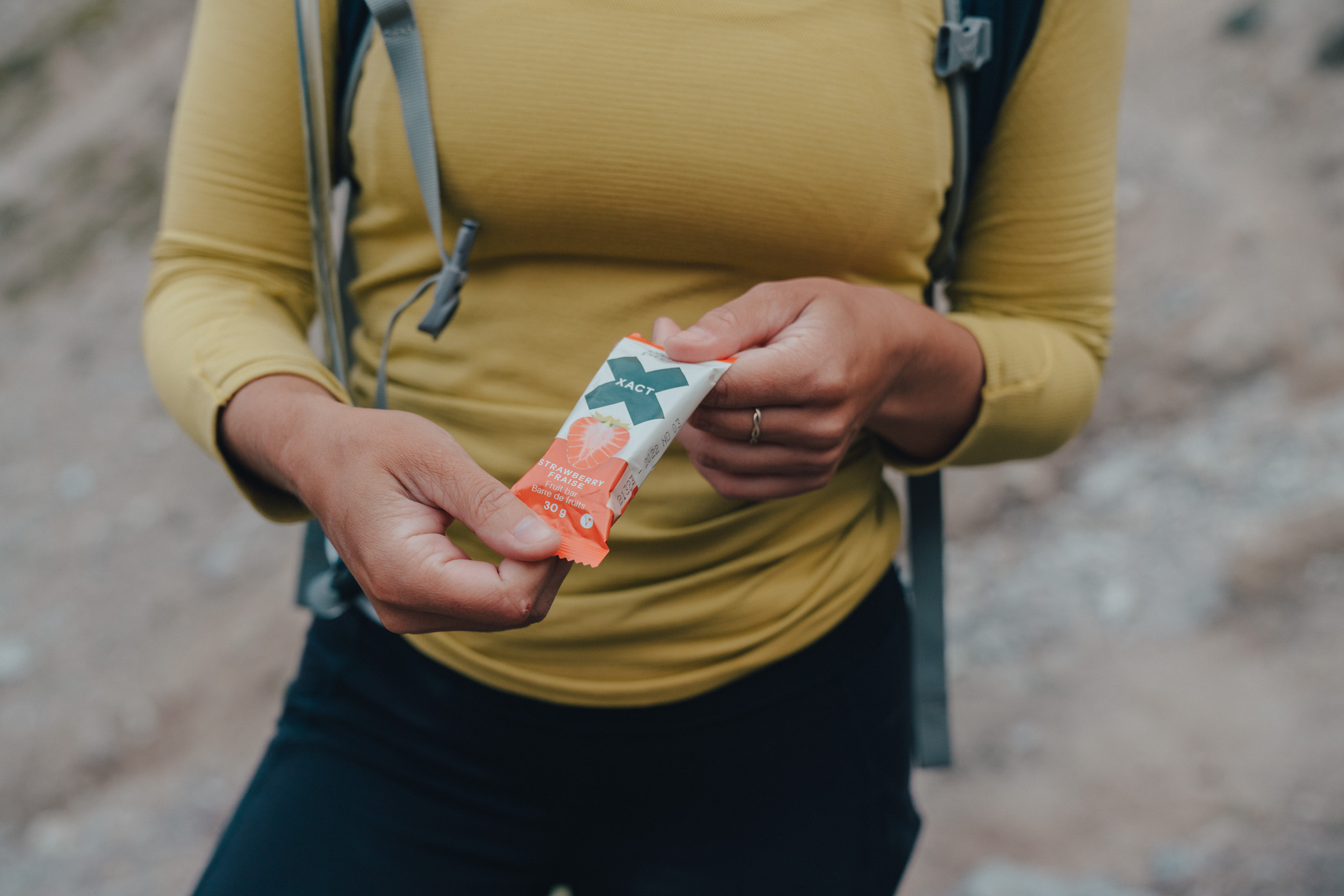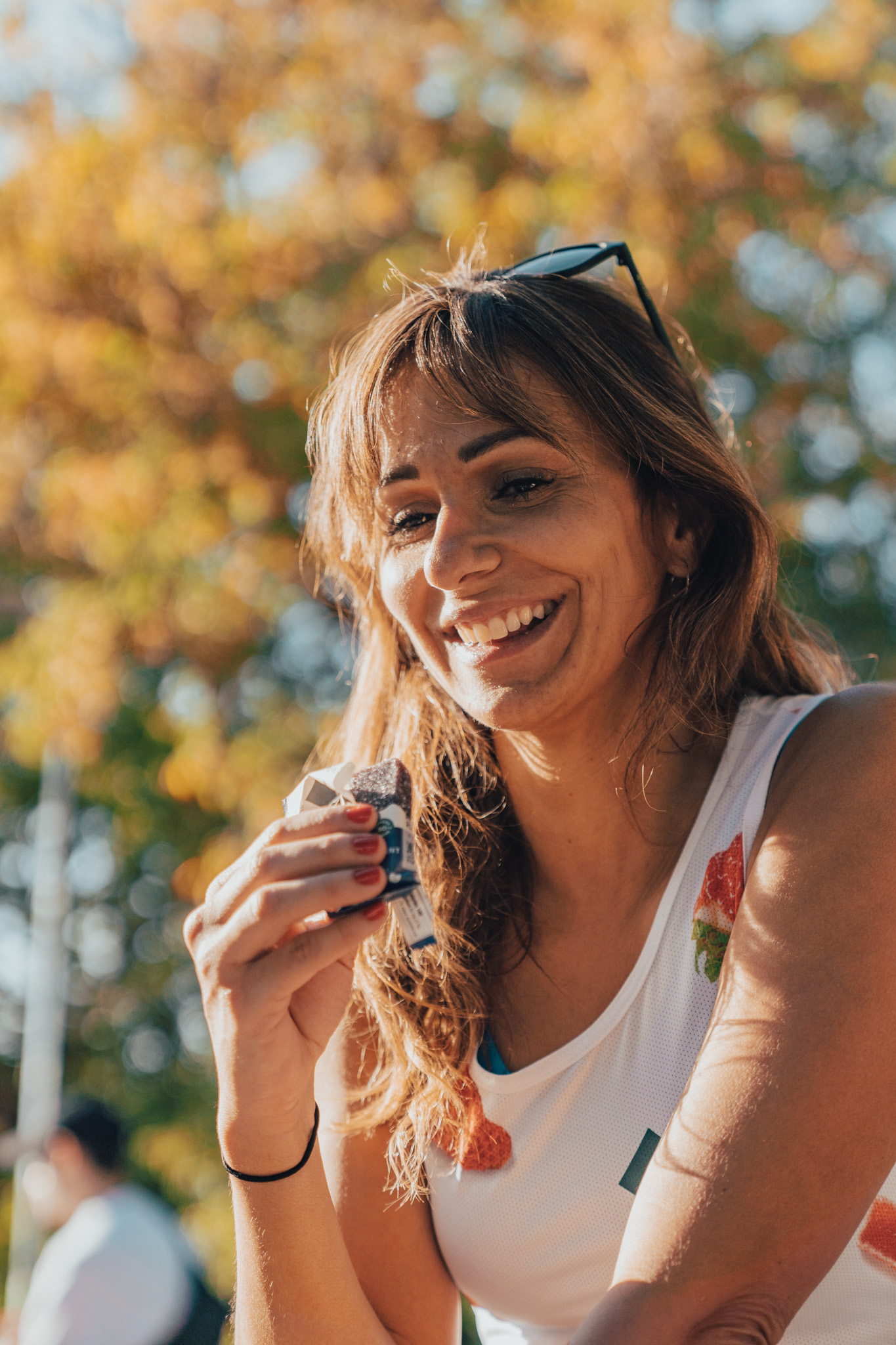You’ve put in the work over the past few months and now race day is here. But how will you fuel yourself over 8 km? 21.2 km? 42.2 kms? It’s all about avoiding the bonk or ‘hitting the wall’… There are no secret techniques, just proper planning and execution. We’ll take you through the basics to help you fuel properly for your race.

Pre race:
There are three main energy sources for our bodies; carbohydrates, protein and fat. Our bodies preferred fuel source for a medium-high intensity activity like running a marathon are carbohydrates. Simple carbohydrates (sugars) are quick to digest and rapidly convert to usable energy, while more complex carbohydrates are slower burning. Our bodies usually burn the calories we get from eating carbohydrates over the few hours following a meal. We are also able to accumulate some carbohydrate reserves in our muscles and liver, this is known as glycogen. These glycogen reserves are an important energy source when we run long distances like a 8, 21 or 42 kilometres.
To do this, 3 days before the race, start focusing on carbs as the centrepiece of your meals. It doesn’t mean dishes piled high with pasta every meal, but at least regular intake of carbs like rice, potatoes and pasta. Combined with your reduced training plan as you taper for the race, this will allow your body to stock up your glycogen reserves providing you with “fuel” ready in the tank.
It is also important to properly hydrate over this time as our bodies will store water with the glycogen. It also helps to be properly hydrated before a large endurance event (especially if we are going to sweat a lot on a hot day). Electrolytes like sodium will help us to absorb and retain fluids effectively. An extra glass of water each day (ideally with some electrolytes mixed in) will help ensure you are properly hydrated for your race.
Dinner the night before:
This will be the last chance for you to stock up your glycogen reserves so keep eating carbs! Stick with foods you know well, keep it simple and don’t over eat. At big city races, often you’re away from home the night before so pasta is an easy option to find in restaurants or prepare beforehand. Go easy on the fats, proteins and fibre (yep, white pasta is OK on this occasion, especially if too much fibre doesn’t agree with you). It helps to eat early in the evening too so you can go to bed rested. On that note, avoid caffeine and alcohol.
Race day Breakfast:
Stay on the carb train! But don’t feel you have to stuff yourself; you’ll be carrying what you eat. Bagels or porridge mixed with jam, sliced banana or maple syrup provide a mix of slow burning and fast burning carbs, so you’ll be energised at the start line but not feeling hungry. Keep it simple and aim to have eaten at least 2 hrs prior to the race to be sure your stomach has settled. If you drink coffee then go ahead and have your morning cuppa. Caffeine stimulates the body and has been proven to reduce perceived effort during intense exercise.
Race time!
8 km
For race distances under 10 kms, it is unlikely that you’ll be fueling during the race. If you have followed the above steps then your glycogen reserves should easily be able to supply all the energy you need and allow you to focus on the race.
If you think you might need a boost, then 30-60 minutes before the race a small simple carb snack like an XACT ENERGY bar will be easy to digest.

Marathon & 21 km distance
Just like with the 8 km pre-race plan, you can give your energy levels one last pre-race boost by taking a gel or XACT ENERGY bar 30 minutes before the race. This is particularly useful if it has been more than a few hours since breakfast, as you will have already started burning the energy you consumed at breakfast.
Those glycogen reserves you built up will last you about 60-90 minutes. The key is to start fueling before these reserves run out. The idea is to keep those energy reserves topped up for as long as possible. In other words you want to eat regularly throughout the race, because if you wait too long, you won’t be able to catch up!
Aim to eat 100 calories of simple carbohydrates every 30-45 minutes. This is where gels and energy chews come in handy; an XACT ENERGY bar is exactly 100 calories and most importantly, is easy to eat and digest, so a great choice for eating and running at the same time. Rather than asking yourself at which km marker to eat, it can be more helpful to think in terms of time. 1 fruit bar every 45 minutes is a good place to start. If you can eat more regularly then you should be able to push harder, running at a higher intensity. You might be able to set your watch alarm to remind you when to eat as it can be easy to get caught up in the race excitement and atmosphere.
Marathon course:
There are three fueling stations along the course; the first is on W 16th Ave just after the 12 kilometre marker. Then, at kilometre 21 on NW Marine Drive look out for the FuelYourGoals arch just before Spanish Banks Beach parking lots. The third station is at 30 kilometres, just before you head out around Stanley Park along the Seawall path.
Each station will be stocked with a mix of strawberry, apricot and orange XACT ENERGY bars, plus a whole lotta cheering and shouting. Go go go!
If you know what pace you expect to be running, you can work out approximately at what time you’ll arrive at each. For example, If you are running at 6 minutes per kilometre, you’ll be about due for your second bar by the time you reach the first aid station. This quick calculation will allow you to work out how many bars you need to bring with you from the start (Pro tip: an extra bar is always handy, in case things get tough towards the end).
There are hydration stations every 3-5 kms along the course. So grabbing a mouthful of water or electrolyte drink is easy and definitely recommended. With the race taking place in early May, there is a good chance that it could be a warm day. If you don’t know your sweat rate (by measuring your weight before and after your training runs), then listen to your body and anticipate your thirst. Don’t just try to chug as much as possible as you go along.
21 km course:
There is one fueling station on the half marathon course. It’s on Beach Avenue by Sunset Beach at the 10.5 km mark. This will also be stocked with XACT Energy bars. For many folks, that important 45-30 minute timing may mean they’ll have packed a gel or XACT Energy bar to eat before reaching the station and will want to grab an XACT Energy bar there to eat soon after. That bar will be what keeps your energy up as you push through Coal Harbour and onto the finish line.
There are plenty of water and electrolyte drink stations along the course. If it is a warm day, aim to grab a cup when you can. Listen to your body’s thirst signals and your sweat rate. No need to be chuggin litres of fluid at every station.
How many bars will you need?
Use this table to get an idea of how many bars or gels you will need for your distance. Remember, the harder you push, the more regularly you’ll want to be consuming energy:
Bar number |
Every 30 mins |
Every 45 mins |
| 1 | 30 mins | 45 mins |
| 2 | 1 hr | 1 h 30 |
| 3 | 1 h 30 | 2 h 15 |
| 4 | 2 hr | 3 h |
| 5 | 2 h 30 | 3 h 45 |
| 6 | 3 h | 4 h 30 |
| 7 | 3 h 30 | 5 h 15 |
| 8 | 4 h | 6 h |
And so on..

**Pro tip on caffeine:
Caffeine is a great stimulant for the body and brain and has been proven to reduce perceived effort during endurance events like running. For the marathon and half marathon runners, don’t wait until late in your race to take a caffeinated gel (XACT Energy Blackcurrant has 50 mg of caffeine – like a shot of espresso). Caffeine’s effect can last for a few hours so take them early on to get the most benefit. For runners doing the 8 km course, you can consume caffeine 30-60 minutes prior to the race to benefit from it.
Recovery
Congratulations you’ve finished! Grab an XACT PROTEIN bar, a banana and some fluids and go sit down. By consuming a mix of protein and carb soon after your race, you’ll help your body recover quicker. Fluids are important so aim for 500-1000 ml after your race ..Once you’ve finished that, you’ll be ready for that post race celebratory beer. Well done!
